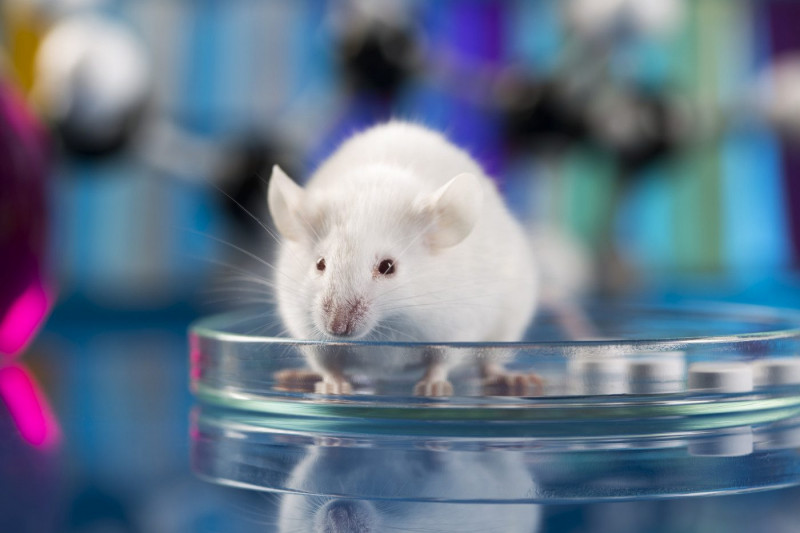Mesenchymal Stem Cells Show Potential to Treat NTM Lung Infections
Written by |

Treatment with human mesenchymal stem cells (MSCs) effectively lessened hard-to-treat non-tuberculous mycobacteria (NTM) lung infection, and its associated weight loss, in a new mouse model susceptible to these infections, an early study reported.
“The potential to use human mesenchymal stem cells to treat difficult lung infections is promising,” Anthony Atala, MD, the director of the Wake Forest Institute for Regenerative Medicine and the editor-in-chief of the journal Stem Cells Translational Medicine, where the study was published, said in a press release.
The study, “Donor‐defined mesenchymal stem cell antimicrobial potency against nontuberculous mycobacterium,” highlighted “the ability of using optimal donors to obtain maximum treatment success,” Atala added.
People with underlying lung diseases, such as chronic obstructive pulmonary disease (COPD) and cystic fibrosis (CF), are more susceptible to lung infections caused by NTM — a set of more than 160 species of bacteria found naturally in the environment.
Tracey L. Bonfield, PhD, the study’s first author with Case Western Reserve University, said NTM infections “can be very difficult to resolve,” with treatment typically requiring “multiple antibiotics, often for years.”
“Patients who suffer from chronic NTM infection not only deal with the consequences of the disease, but also the toxicity, as well as inefficiency and side effects of the antibiotics used to treat it,” Bonfield said.
Mycobacterium avium complex (MAC) is the most common cause of NTM lung infections in humans, and the most problematic are Mycobacterium avium (M. avium) and Mycobacterium intracellulare (M. intracellulare).
MSCs, which are capable of maturing into many other cell types, are thought to have strong immunomodulatory and anti-inflammatory properties.
“They are dynamic storehouses of anti-microbial activity” and “unique in their capacity to respond to infection by secreting multiple bioactive factors, contributing to the host environment,” Bonfield said.
“That gives hMSCs [human mesenchymal stem cells] a clinical advantage over traditional pharmaceuticals,” she added.
A previous study by Bonfield and colleagues also showed that hMSC treatment “results in improved effectiveness of antibiotics, thus decreasing the dose required for eradication of bacteria,” the researchers wrote.
These properties, combined with the fact that MSCs can be derived from a patient’s bone marrow, grown in the lab, and later returned to the patient, make them a promising therapeutic approach for chronic inflammation and infection, Bonfield said.
Bonfield and her colleagues now showed, reportedly for the first time, that human MSCs are effective at reducing infection by M. intracellulare and M. avium, both in cells grown in the lab (in vitro) and in a mouse model of CF.
But they first had to develop a standardized animal (in vivo) model of chronic MAC infection that effectively allowed the evaluation of human MSCs’ therapeutic potential. The generation of such models has been challenged by the bacteria’s slow growing nature, meaning that they rapidly clear in commonly used, small animal models.
To overcome this problem, researchers administered the bacteria within microspheres, or beads, made up of a large seaweed molecule called agarose. This allowed bacteria to be released from the agarose beads into the animals’ lungs, while the microspheres themselves slowly broke down.
“The beads degrade gradually, releasing the NTM into the mice and thus extending the time of infection and inflammatory response,” Bonfield said, adding that “this modeling system has been very efficient in generating acute and chronic scenarios of infection in all of our models.”
The researchers then evaluated which of the MSCs from 12 human donors were the most effective at easing MAC infections in both these in vitro and in vivo models.
“Every donor hMSC preparation has a unique profile in terms of how the cells respond to [foreign disease-causing microbes], which likely translates into their successful potency and how the patient responds to hMSC treatment,” Bonfield said.
In vitro experiments highlighted a significant donor-dependent variability in the ability of MSCs and their secreted, soluble products to prevent or slow the growth of either MAC species or a combination of both.
Further analysis also showed that the antibiotic‐boosting capacity of the two best MSC preparations “was much higher in MAC and M. avium than in M. intracellulare, consistent with the dominance of M. avium in MAC,” the researchers wrote.
The administration of the most effective human MSCs to a CF mouse model infected with either M. avium or M. intracellulare though the agarose beads resulted in a significantly lower bacterial load in the lungs, compared with untreated mice. MSC treatment prevented the weight loss associated with M. intracellulare infection seen in untreated mice.
These findings highlight “the compelling versatility of hMSCs” and their ability to lessen the course of NTM lung infection in a mouse model of CF, “attenuating lost weight, … and pathogenic load,” the team wrote.
They also “point out that not all hMSC preparations have the same level of antimicrobial potency or sustainability in activity, suggesting that it is essential to identify the appropriate hMSC donor and subsequent preparation for disease‐specific applications,” the researchers added.
“Focusing on hMSC response to NTMs and efficiency of in vitro and in vivo anti-NTM activity provides direction for identifying the optimal hMSC signature for anti-NTM therapy. Data gained from our study begins to define this unique hMSC fingerprint,” Bonfield said.
This new and possibly more effective in vivo model of chronic MAC lung infection may also help to define the ideal treatment regimen for chronic NTM infections, the team noted.




